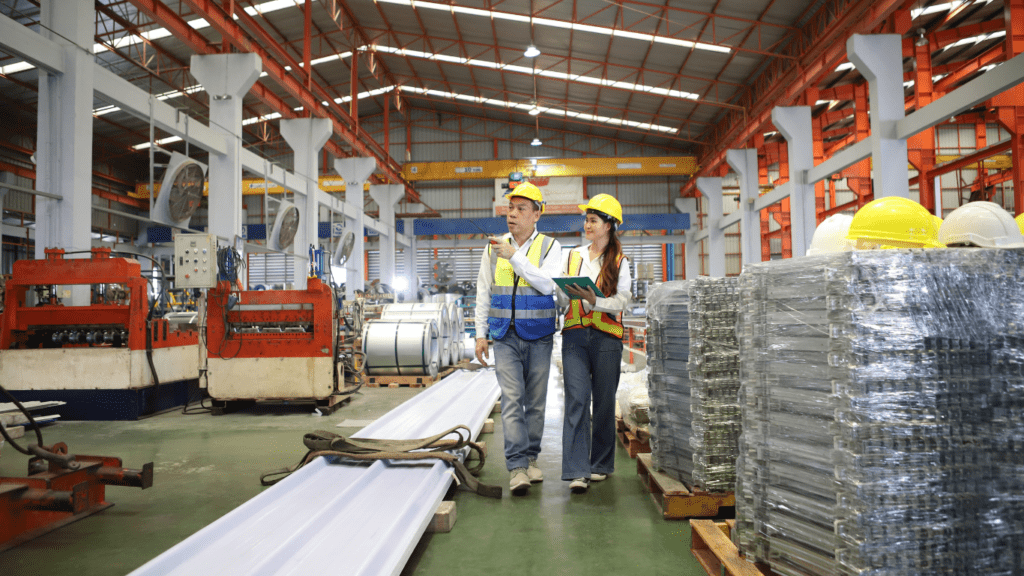Technological Innovations in 2024
The automotive industry sees rapid strides in 2024. These advancements shape production processes and vehicle performance while meeting new regulatory standards.
Advancements in Electric Vehicle Production
Battery technology pushes electric vehicle (EV) production to new heights. Companies now produce batteries with higher energy densities and faster charging times, enhancing vehicle range and consumer satisfaction. Solid-state batteries emerge as a game-changer, providing increased safety and longevity. Major manufacturers like:
- Tesla
- Volkswagen
ramp up production capacities utilizing these advanced technologies, reducing costs and improving accessibility for consumers.
AI and Automation in Manufacturing
AI and automation redefine automotive manufacturing. AI-driven predictive maintenance reduces equipment downtime, ensuring smoother operations. Robotics perform complex assembly tasks with precision, enhancing production efficiency and quality. AI-driven software optimizes supply chain management, forecasting demand, and streamlining logistics. Companies like BMW and Ford implement smart factories with interconnected machines, delivering consistent and high-quality outputs while minimizing waste.
Sustainability and Green Manufacturing
In 2024, the automotive industry is focusing more on sustainability and green manufacturing practices. The rise of eco-friendly initiatives is transforming how vehicles are produced and how companies operate.
Adoption of Renewable Energy Sources
Automotive companies are increasingly embracing renewable energy. Tesla’s Gigafactories, for instance, are partially powered by solar energy, while BMW harnesses wind energy in its manufacturing plants. These initiatives aim to reduce carbon footprints and promote energy efficiency. The use of renewable energy sources like solar, wind, and hydropower is becoming standard practice to meet sustainability targets. This shift not only lowers greenhouse gas emissions but also sets a precedent for other industries to follow.
Recycling and Waste Reduction Strategies
Recycling and waste reduction are critical facets of green manufacturing. Companies like Toyota and Ford are implementing closed-loop recycling systems, which reclaim materials from old vehicles to use in new ones. This reduces waste and conserves resources. For example, Ford’s Dearborn Truck Plant has successfully reused 20 million pounds of aluminum through recycling. Other strategies include using biodegradable materials, optimizing production processes to minimize scrap, and repurposing industrial waste. These efforts advance sustainability and align with global environmental standards.
Market Trends and Consumer Preferences
In 2024, market trends and consumer preferences are significantly influencing the automotive industry. Noteworthy developments include the growing demand for electric vehicles and the shift towards sustainable materials.
Growing Demand for Electric Vehicles

- Electric vehicles (EVs) continue to gain traction among consumers.
- Sales data shows a consistent increase, with global EV sales reaching approximately 14 million units in 2023.
- Key factors driving this demand include enhanced battery technology and greater charging infrastructure.
- Popular models like the Tesla Model 3 and Ford Mustang Mach-E are leading the market.
- As battery costs continue to drop and government incentives increase, more consumers are choosing EVs over traditional internal combustion engine vehicles.
- Major cities are also implementing stricter emissions regulations, further boosting the appeal of EVs.
Shift Towards Sustainable Materials
Consumer preferences are pushing automotive manufacturers to adopt sustainable materials. Traditional materials like steel and plastic are being replaced by alternatives such as recycled aluminum and bioplastics. For example, BMW’s i3 uses carbon fiber reinforced plastic (CFRP) to reduce weight and improve efficiency. Tesla and Volvo are incorporating recycled and bio-based materials in their latest models. These sustainable materials not only meet regulatory standards but also resonate with eco-conscious consumers. By integrating these materials, automakers reduce environmental impact, align with sustainability goals, and cater to the evolving preferences of their customers.
Regulatory Changes and Compliance
In 2024, the automotive industry faces stringent regulatory changes that impact manufacturing and compliance standards. Key areas of focus include emissions standards and safety and quality control updates.
New Emissions Standards
New emissions standards in 2024 mandate stricter limits on pollutants. The European Union (EU) introduces Euro 7 standards, which reduce allowable nitrogen oxide (NOx) and particulate matter emissions. For instance, passenger cars must limit NOx emissions to 60 mg/km. The United States implements Tier 3 standards, which tighten the fleet-wide average for NOx and non-methane organic gases (NMOG) to 30 mg/mile.
Automakers are investing in advanced technologies to meet these stringent requirements. Electric vehicles (EVs) see increased adoption due to their zero-emission profiles. Hybrid models with improved internal combustion engines and battery systems, exemplified by the Toyota Prius and Hyundai Ioniq, also gain traction. Manufacturers are also exploring carbon capture and storage (CCS) technologies to further reduce their carbon footprints.
Safety and Quality Control Updates
Safety and quality control updates in 2024 focus on enhancing vehicle performance and consumer protection. The National Highway Traffic Safety Administration (NHTSA) in the United States rolls out new standards for advanced driver-assistance systems (ADAS). These include mandatory inclusion of features like lane-keeping assistance and adaptive cruise control in all new vehicles.
The European New Car Assessment Programme (Euro NCAP) updates its safety protocols to address emerging technologies. For instance, automated emergency braking (AEB) must now detect pedestrians and cyclists, not just vehicles. Enhanced crash-test scenarios also evaluate vehicle performance in real-world conditions.
Automakers are integrating AI and machine learning for predictive maintenance and real-time safety monitoring. Companies like Tesla and Volvo employ over-the-air (OTA) updates to ensure vehicles meet the latest safety standards. This proactive approach enhances reliability and reduces the risk of recalls.
Challenges and Opportunities
2024 presents both challenges and opportunities in automotive manufacturing. Industry changes necessitate adaptations in supply chain management and workforce training.
Supply Chain Management
Supply chain management faces disruptions due to global semiconductor shortages, impacting production timelines and vehicle availability. Companies like Ford and General Motors are investing in local semiconductor production to mitigate these effects. Implementing just-in-time inventory systems, as used by Toyota, can reduce excess inventory costs but requires precise coordination with suppliers. Additionally, diversifying supply sources helps companies avoid reliance on any single provider, increasing resilience against potential disruptions.
Workforce Training and Development
Evolving technology demands new skills in automotive manufacturing. Automation and AI integration necessitate training programs focused on robotics, machine learning, and advanced manufacturing techniques. BMW and Toyota have developed in-house training schools to upskill workers, ensuring proficiency with new technologies. Partnerships with technical institutions, like those between Tesla and local colleges, provide continuous education opportunities, preparing the workforce for future industry needs. This approach addresses skill gaps and enhances overall production efficiency.




